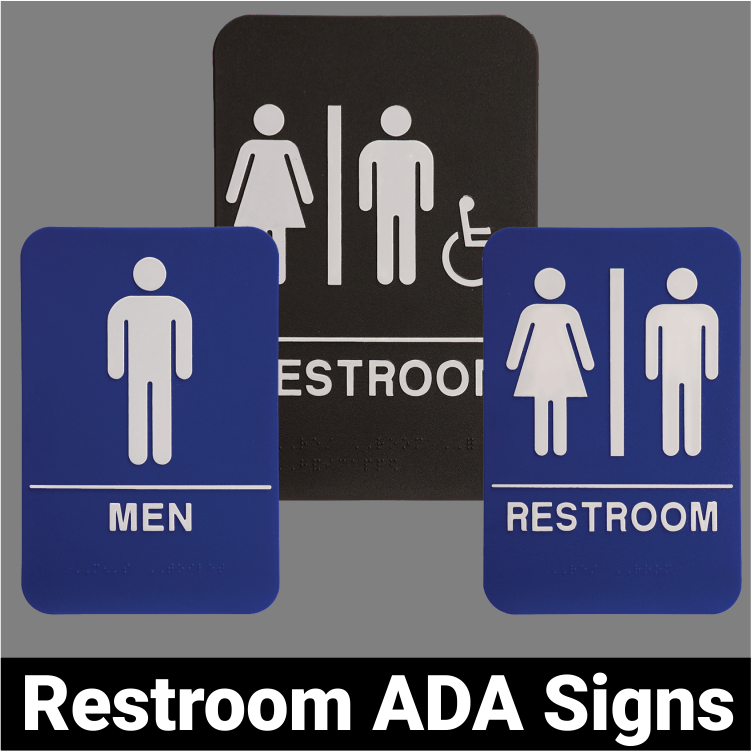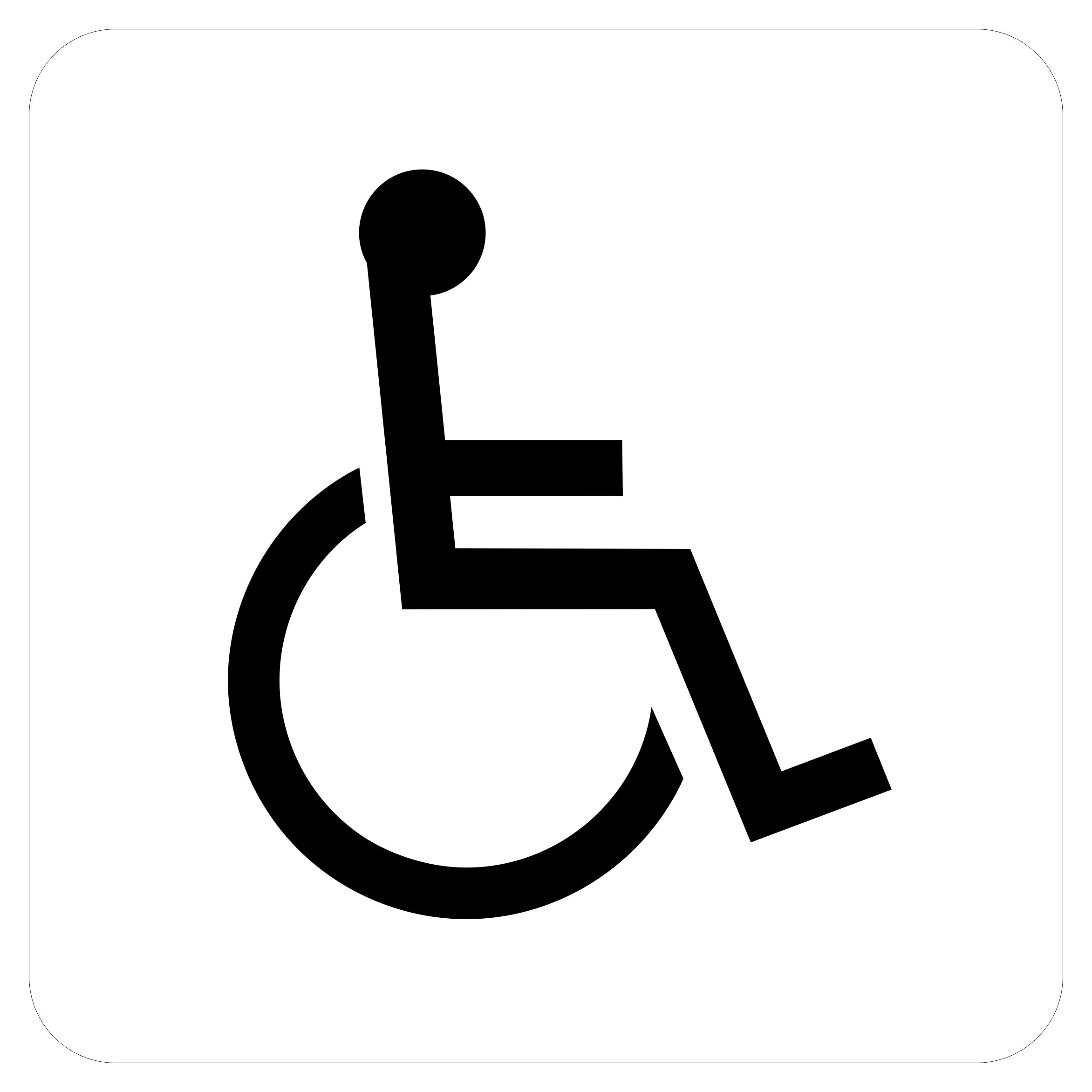The Function of ADA Signs in Adhering To Ease Of Access Criteria
The Function of ADA Signs in Adhering To Ease Of Access Criteria
Blog Article
Checking Out the Trick Attributes of ADA Indications for Improved Availability
In the realm of availability, ADA indications work as silent yet effective allies, making certain that spaces are accessible and comprehensive for individuals with impairments. By integrating Braille and responsive aspects, these signs break obstacles for the aesthetically damaged, while high-contrast color design and readable fonts deal with diverse visual demands. Their strategic positioning is not arbitrary but rather a computed effort to facilitate smooth navigating. Yet, past these functions lies a much deeper narrative about the development of inclusivity and the continuous dedication to producing fair spaces. What a lot more could these signs symbolize in our pursuit of universal accessibility?
Value of ADA Conformity
Making sure compliance with the Americans with Disabilities Act (ADA) is crucial for promoting inclusivity and equal accessibility in public rooms and workplaces. The ADA, passed in 1990, mandates that all public centers, companies, and transportation solutions fit people with handicaps, ensuring they delight in the same legal rights and possibilities as others. Conformity with ADA criteria not just fulfills legal commitments yet additionally boosts a company's credibility by demonstrating its commitment to diversity and inclusivity.
One of the essential elements of ADA conformity is the application of obtainable signs. ADA indicators are created to make certain that people with handicaps can conveniently browse through rooms and structures. These indications must comply with particular guidelines concerning size, font, color comparison, and positioning to ensure exposure and readability for all. Properly executed ADA signage aids remove barriers that individuals with handicaps frequently experience, thus promoting their freedom and self-confidence (ADA Signs).
Additionally, adhering to ADA regulations can minimize the danger of potential fines and legal consequences. Organizations that fail to adhere to ADA guidelines may face legal actions or charges, which can be both destructive and financially challenging to their public image. Thus, ADA compliance is integral to promoting a fair setting for every person.
Braille and Tactile Elements
The unification of Braille and tactile aspects right into ADA signs symbolizes the concepts of ease of access and inclusivity. These attributes are important for people who are blind or aesthetically damaged, enabling them to browse public rooms with greater self-reliance and confidence. Braille, a tactile writing system, is crucial in providing composed details in a layout that can be conveniently perceived with touch. It is commonly placed below the corresponding text on signs to make certain that individuals can access the information without visual aid.
Responsive components expand past Braille and consist of increased characters and signs. These parts are made to be discernible by touch, enabling individuals to identify room numbers, toilets, departures, and various other critical locations. The ADA establishes particular guidelines pertaining to the dimension, spacing, and placement of these tactile components to maximize readability and guarantee consistency throughout different environments.

High-Contrast Color Pattern
High-contrast shade systems play a critical function in improving the visibility and readability of ADA signs for individuals with aesthetic impairments. These plans are necessary as they optimize the difference in light reflectance in between text and history, making sure that signs are quickly noticeable, also from a distance. why not look here The Americans with Disabilities Act (ADA) mandates making use of particular shade contrasts to accommodate those with minimal vision, making it a vital facet of conformity.
The efficiency of high-contrast colors exists in their ability to stand apart in various illumination problems, including poorly lit settings and locations with glare. Typically, dark text on a light history or light message on a dark background is utilized to attain optimal contrast. For example, black message on a yellow or white history gives a stark visual distinction that assists in fast recognition and comprehension.

Legible Fonts and Text Dimension
When considering the design of ADA signs, the selection of readable fonts and suitable text size can not be overemphasized. The Americans with Disabilities Act (ADA) mandates that font styles need to be sans-serif and not italic, this link oblique, script, highly attractive, or of uncommon type.
The size of the text also plays a pivotal duty in access. According to ADA guidelines, the minimum message elevation ought to be 5/8 inch, and it should raise proportionally with checking out distance. This is specifically crucial in public areas where signage needs to be reviewed rapidly and accurately. Uniformity in text size adds to a cohesive aesthetic experience, helping individuals in navigating settings effectively.
Moreover, spacing between lines and letters is indispensable to clarity. Adequate spacing stops characters from appearing crowded, improving readability. By sticking to these standards, developers can considerably boost availability, ensuring that signage offers its desired function for all individuals, despite their visual capacities.
Effective Placement Methods
Strategic positioning of ADA signage is essential for maximizing ease of access and making certain compliance with lawful requirements. Effectively positioned indications lead people with impairments effectively, helping with navigating in Continue public rooms. Trick considerations consist of proximity, visibility, and height. ADA standards specify that indicators need to be mounted at an elevation between 48 to 60 inches from the ground to ensure they are within the line of sight for both standing and seated individuals. This standard height range is vital for inclusivity, allowing mobility device individuals and individuals of varying heights to accessibility info effortlessly.
Furthermore, signs must be positioned surrounding to the latch side of doors to allow very easy identification before access. This positioning helps people find rooms and rooms without blockage. In cases where there is no door, indicators need to be positioned on the closest adjacent wall surface. Consistency in sign positioning throughout a facility enhances predictability, lowering complication and improving total customer experience.

Final Thought
ADA signs play a crucial duty in advertising accessibility by integrating features that attend to the needs of individuals with impairments. Including Braille and tactile aspects makes sure crucial info comes to the visually damaged, while high-contrast color pattern and readable sans-serif typefaces boost exposure throughout various lighting conditions. Effective placement techniques, such as proper mounting elevations and strategic locations, even more help with navigation. These aspects collectively foster a comprehensive setting, emphasizing the value of ADA compliance in making certain equal accessibility for all.
In the realm of accessibility, ADA indicators offer as quiet yet powerful allies, making certain that areas are inclusive and accessible for individuals with specials needs. The ADA, established in 1990, mandates that all public facilities, employers, and transport solutions fit people with specials needs, guaranteeing they enjoy the very same legal rights and possibilities as others. ADA Signs. ADA indications are created to ensure that individuals with specials needs can conveniently browse through spaces and buildings. ADA guidelines state that signs need to be placed at a height between 48 to 60 inches from the ground to guarantee they are within the line of view for both standing and seated individuals.ADA signs play an essential function in promoting access by integrating attributes that address the demands of individuals with handicaps
Report this page